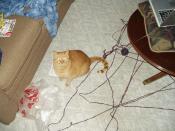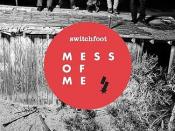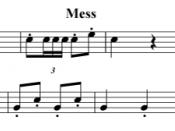In the piece entitled "Mess", John Hollander uses lists to create a humorous tone through familiarity. One example of how this is done is shown through the description of any person's messy desk. He lists the numerous items that he, himself, could see all around him while composing this piece. Many of the items in his list are easily identifiable by people who work in an office building or at home in their own office. They can look at the example and laugh at how realistic it actually is: constantly moving one mess only to create another, or avoiding it, but finding more and more rubbish. A second example is the list of items found in Tom Sawyer's pocket. There were parts and pieces and fragments of things, along with a kitten with only one eye. The thing that most stuck out to me, however, was the key that would not unlock anything because everyone I've ever known has had one of those.
Another good example comes in Hollander's description of the way he sees his cat move around and over the "mess" in his house. He watches his cat carefully stepping across and trying not to disturb the stacks of papers and mountains of books and manuals in his list that have been there for weeks and months. Cats completely ignore the fact that it is a mess, all the while, being so neat about themselves. All of these examples are things that most people see every day in their own home or office or in the home of a close friend or relative. The lists create humor because they are lists of things that we all have and are familiar with. We can all relate to the "mess" in the lists and laugh at ourselves for being that way.





